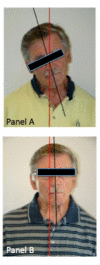Proteomic signature of Temporomandibular Joint Disorders (TMD): Toward diagnostically predictive biomarkers
- PMID: 21364835
- PMCID: PMC3043347
- DOI: 10.6026/97320630005282
Proteomic signature of Temporomandibular Joint Disorders (TMD): Toward diagnostically predictive biomarkers
Abstract
The temporomandibular joint (TMJ) articulates the mandible with the maxilla. Temporomandibular joint disorders (TMD) are dysfunctions of this joint, which range from acute to chronic inflammation, trauma and dislocations, developmental anomalies and neoplasia. TMD manifest as signs and symptoms that involve the surrounding muscles, ligaments, bones, synovial capsule, connective tissue, teeth and innervations proximal and distal to this joint. TMD induce proximal and distal, chronic and acute, dull or intense pain and discomfort, muscle spasm, clicking/popping sounds upon opening and closing of the mouth, and chewing or speaking difficulties. The trigeminal cranial nerve V, and its branches provide the primary sensory innervation to the TMJ. Our clinical work suggests that the auriculotemporal (AT) nerve, a branch of the mandibular nerve, the largest of the three divisions of the trigeminal nerve, plays a critical role in TMD sequelae. The AT nerve provides the somatosensory fibers that supply the joint, the middle ear, and the temporal region. By projecting fibers toward the otic ganglion, the AT nerve establishes an important bridge to the sympathetic system. As it courses posteriorly to the condylar head of the TMJ, compression, injury or irritation of the AT nerve can lead to significant neurologic and neuro-muscular disorders, including Tourette's syndrome,Torticolli, gait or balance disorders and Parkinson's disease. Here, we propose that a proteomic signature of TMD can be obtained by assessing certain biomarkers in local (e.g., synovial fluid at the joint) and distal body fluids (e.g., saliva, cerebrospinal fluid), which can aid TMD diagnosis and prognosis.
Figures
References
-
- Greene CS. Am J Orthod Dentofacial Orthop. 2010;138:3. - PubMed
-
- Johansson AS, et al. J Oral Maxillofac Surg. 1990;40:953. - PubMed
-
- Fricton J, et al. J Orofac Pain. 2010;24:237. - PubMed
-
- Schmidt BL, et al. Oral Surg Oral Med Oral Pathol Oral Radiol Endod. 1998;86:165. - PubMed
-
- Fernandes PR, et al. Cranio. 2003;21:165. - PubMed
LinkOut - more resources
Full Text Sources
Research Materials

